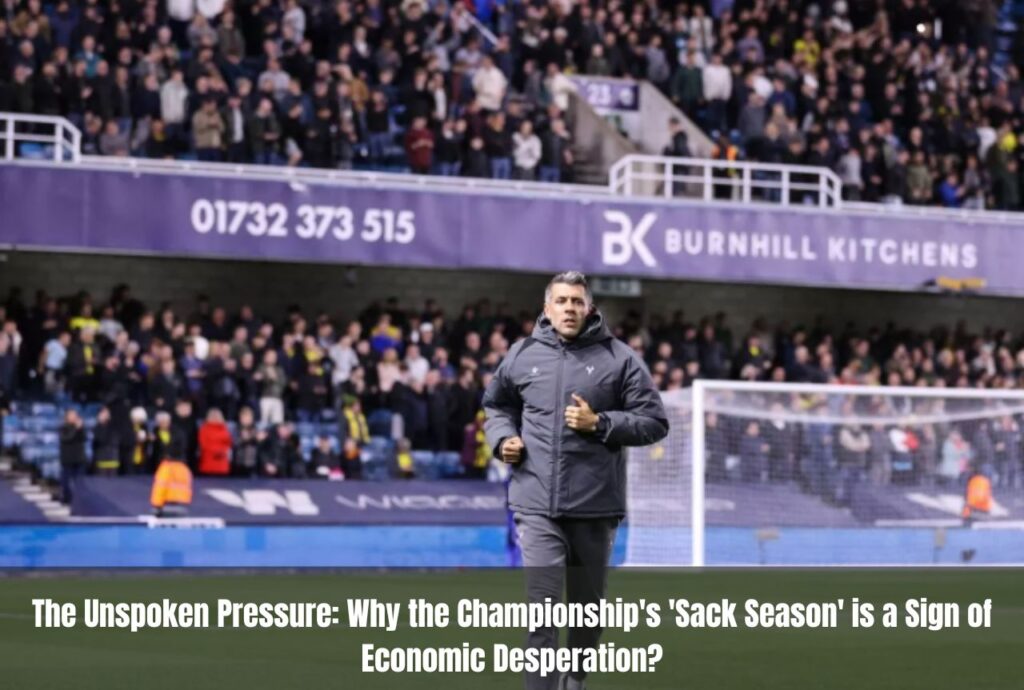The Championship isn’t merely competitive; it’s carnivorous. By March 2024, 15 managers had been sacked; the average managerial reign has halved in a decade; the division operates under a relentless “promotion or peril” calculus. While the Premier League offers Klopp-esque dynasties and Champions League glory, England’s second tier reveals football’s most emphatic truth: financial survival now dictates sporting strategy with escalating ruthlessness.
A Season of Turbulence
The Relentless Sack Race
Watford’s Valérien Ismaël became the 10th Championship dismissal in February; by March, that tally rose to 15, surpassing 2022/23’s total. Contrast this volatility with Premier League stability: since 2022, only 8 top-flight bosses faced the axe. The Championship’s sack rate isn’t merely impulsive—it’s a persistent symptom of clubs operating on financial life support. As one sacked boss noted: “Owners project patience until the math turns apocalyptic.”
The Data: A Pivotal Shift in Managerial Tenure
Halved Reigns, Rising Panic
In 2014, Championship managers averaged 24-month tenures; today, it’s collapsed to 11.3 months (The Athletic). Meanwhile, the Premier League’s average sits at 27 months, exemplified by Thomas Tuchel’s 20-month Chelsea reign—a luxury in the EFL. This disparity aligns with financial fragility: 17 of 24 Championship clubs lost money in 2022/23 (Deloitte), with parachute payments creating a £40m+ revenue chasm between relegated teams and the rest. When survival hinges on avoiding League One’s abyss, owners wield the axe with shrewd desperation.
Dr. Rob Wilson: On Systemic Issues
“The Championship is football’s most precarious ecosystem. Sackings aren’t impulsive—they’re calculated acts of economic survival.”
Economic Desperation: The Unseen Driver
Promotion or Bankruptcy?
Promotion to the Premier League guarantees £180m+ across three seasons; League One relegation risks administration. This binary reality fuels a prolific turnover culture. Southampton, relegated in 2023, committed £15m to wage bills for new signings; Birmingham City’s owners sacked John Eustace in October while 6th, chasing playoff upside. As one owner admitted: “A 10% attendance drop can trigger dismissal. We’re not chasing trophies; we’re avoiding insolvency.”
Anonymous Sacked Championship Manager: On dismissal after 8-month tenure
“Owners talk about projects, but panic when gates drop by 10%. It’s not about trophies here; it’s about staying solvent.”
Human Cost & Sporting Fallout
The Revolving Door Dilemma
Prolific managerial change destabilizes squads: Watford used 20 managers since 2012, stunting academy integration and tactical consistency. Fan pressure, amplified by social media, compounds this—Sheffield Wednesday’s Xisco Muñoz faced #MuñozOut hashtags before his September sacking. Yet studies reveal the folly: Dr. Dan Plumley’s analysis shows <15% of mid-season sackings yield long-term improvement. As Dr. Wilson notes: “Clubs crave composed leadership but act like short-sellers during a crash.”
Championship Club Owner: Defending mid-season sacking
“One relegation could bankrupt us. We can’t afford sentiment; even composed leaders get cut if results dip.”
FAQs: Understanding the Championship Sack Crisis
What defines the Championship’s ‘sack season’?
The 2023/24 campaign saw record managerial turnover, with over 60% of clubs changing managers by March, driven by financial pressures.
How does Championship sack rate compare to the Premier League?
Championship sackings occur 3x more frequently, with shorter tenures and higher relegation-linked desperation.
What financial stakes drive Championship sackings?
Promotion guarantees £180m+; relegation to League One risks administration. Owners view managers as disposable assets.
Do sackings actually improve team performance?
Studies show <15% of mid-season sackings yield positive results long-term, yet economic fear perpetuates the cycle.





Leave a Reply